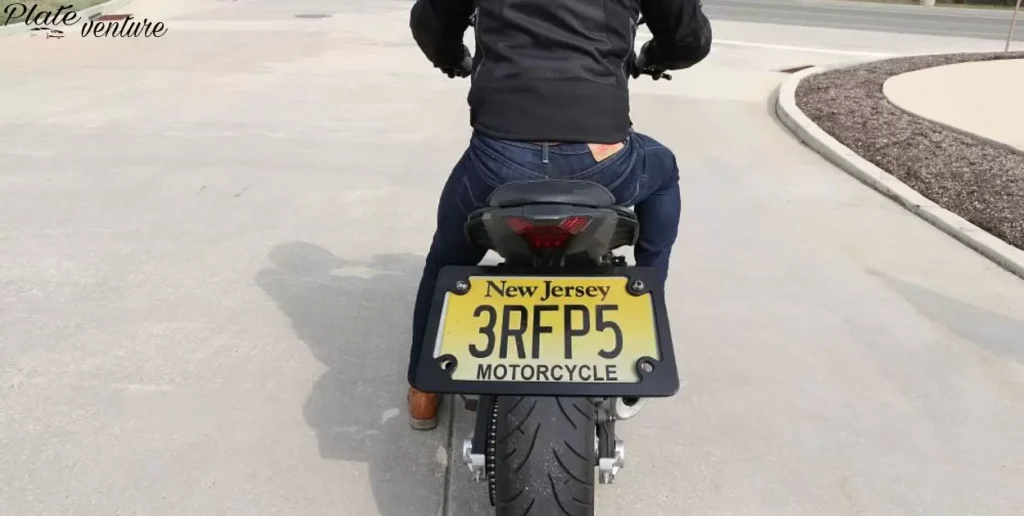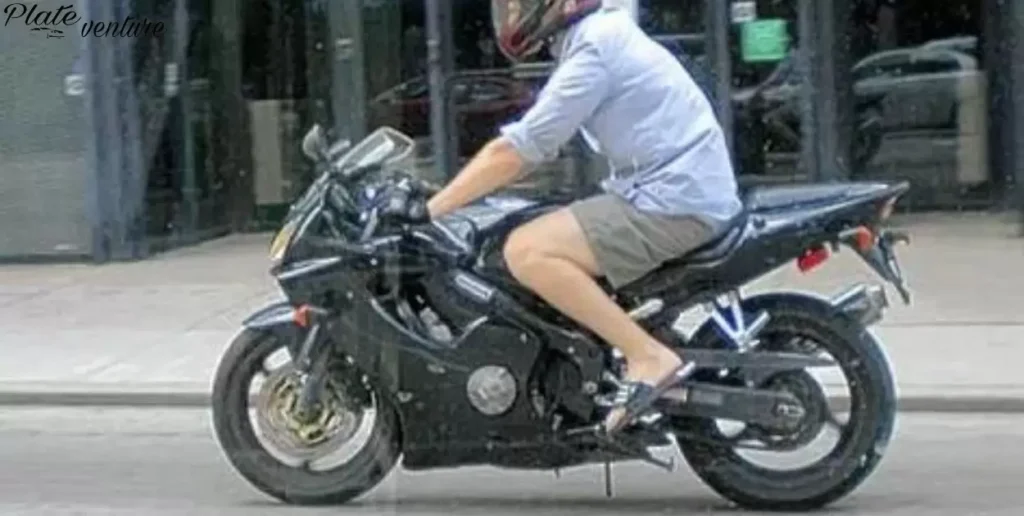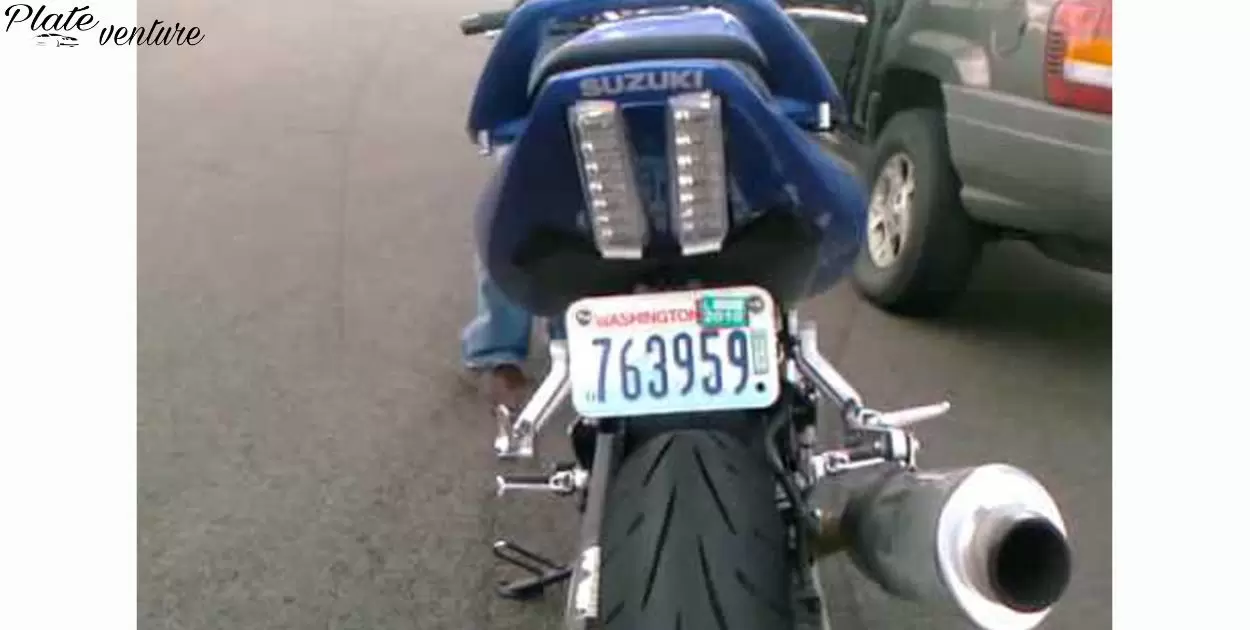Riding a motorcycle can feel liberating, with the wind in your hair as you cruise down open roads. However, you still need to follow laws and regulations, including properly displaying your license plate. Though methods exist to obscure a motorcycle plate, doing so is illegal.
While riders may wish to conceal their plate to avoid tickets or tolls, this only brings bigger issues. Hiding your plate makes it harder to identify your bike if stolen and reduces accountability if involved in an accident. Still, some try techniques like flipping the plate up or covering it with a retractable screen.
Obscuring your motorcycle license plate causes more trouble than it saves. The repercussions simply aren’t worth the perceived benefits. Riders should display their plate properly and seek legal ways to protect their privacy and avoid fines. With responsible riding and registration, you can enjoy the freedom of motorcycling without needing to hide your identity.
Hide Your Motorcycle License Plate (And Why You Shouldn’t)
Riding a motorcycle gives you an unmatched sense of freedom. However, you still need to follow laws and regulations, including properly displaying your license plate. Some riders try techniques to obscure their plates, but doing so illegally causes more problems than it solves.
Why Do Riders Hide Their Plates?
Some common reasons riders give for hiding their plates include:
- Avoiding speed and red light cameras
- Dodging bridge and highway tolls
- Preventing identification if they commit crimes or traffic violations
- Protecting against parking tickets
For these riders, concealing their identity seems worth the risk of fines for an obscured plate. However, the consequences of getting caught are steep and can lead to impounded vehicles, license suspensions, and even jail time. Beyond legal penalties, there are better solutions to the issues that push riders to hide their plates in the first place.
Motorcycle License Plate Flipper Electric
Electric flipper hides license plate. Push button to flip plate up or down. Mounts behind motorcycle rear wheel. Plates flip vertically to hide or reveal. Powered by electric motor instead of manual spring. Allows remotely concealing plate. Considered illegal in most states. Can lead to fines if caught using one.
| Pros | Cons |
| Conceals plate remotely | Illegal in most states |
| No manual effort to flip | Risk being pulled over |
| Quickly hides plate | Voids insurance if in accident |
Electric motorcycle License Plates Have Lowercase Letters flippers allow riders to conceal their plates remotely. However, they are illegal in most places and lead to fines or other issues if caught using one. Riders should display plates properly rather than trying to obscure them..
Techniques Used to Conceal Motorcycle Plates
Riders who hide their plates use various methods to obscure them from view, though none make plates completely invisible:
Flipping the Plate Up
Some riders install their plate so they can flip it up vertically behind the rear wheel. This hides the plate when viewed from the rear but leaves it visible from the side.
Retractable Covers
Retractable screens mount over the plate area. At the push of a button, they can cover the plate or slide open to reveal it. These operate similarly to convertible car tops.
Tucking the Plate In
On some sportbikes, riders tuck the plate up under the rear seat cowling or next to the exhaust. This shields it from view directly from behind but leaves it visible at an angle.
Partial Covers
Some riders use covers that obscure just a portion of the plate, making some letters and numbers hard to read. For example, a small flap may hide the state name, while thin screens can blur the whole plate.
Dirty Plates
Riders also let dirt, mud splatter, and road grime accumulate to obscure their plates. However, this isn’t foolproof since plates are still readable at close distances.
While these techniques hide plates to varying degrees, none keep plates fully concealed in legal ways.
The Problems With Hiding Your Motorcycle License Plate

Beyond simply being illegal, obscuring your motorcycle license plate causes much bigger issues:
It’s Illegal
The most obvious problem is that hiding your plate violates vehicle laws. States require plates to be clearly displayed and legible at all times when riding on public roads. Just having an obscured plate can warrant fines, even without speeding or other traffic violations.
It Voids Insurance
If you ride without a visible license plate, your insurance policy may not cover you in an accident. Insurance companies can deny injury and damage claims if you break traffic laws linked to the incident.
It Raises Suspicion
Riders with covered plates automatically look suspicious to police. Rather than avoiding attention, concealed plates give officers reasonable suspicion to pull you over. And any illegal mods spotted during a stop could mean additional fines.
It Hinders Theft Recovery
If your bike gets stolen, the plate aids police in identifying and recovering it. No plate means it’s much harder to claim your property if recovered. It could also give thieves a reason to target your bike, knowing there’s no easy way to trace it back to them.
It Limits Accountability After Crashes
Having a clearly visible plate ensures you’re held responsible if you cause an accident. Other motorists can contact authorities and provide your plate number to report damage and injuries. No plate means you might dodge culpability.
While riders have reasons for hiding their identity, saving a few bucks on tolls or avoiding a speeding ticket simply isn’t worth the high cost of obscured plate fines and other consequences. Plus, there are legal ways to protect your privacy and avoid unfair fines.
Motorcycle Hideaway License Plate Kit
Hideaway kits conceal license plates. They allow riders to flip plates out of sight. Kits mount plates to back fenders. Plates pivot vertically behind the wheel. Riders activate them remotely. Buttons or switches trigger the flip. Power comes from small electric motors. Springs quickly snap plates back down.
Install requires wiring and drilling holes. Kits include all brackets and hardware. They bolt or rivet to fenders. Wiring taps into bike’s electrics. Complete install takes 1-2 hours. Hideaway kits seem clever initially. But they are illegal in most states. Riders risk tickets and fines if caught. Better to properly display the plate.
Legal Alternatives to Hiding Your Plate
Rather than covering your plate, responsible riders should consider these options:
Fight Unfair Fines Legally
If you receive inaccurate tickets from traffic cameras and toll booths, you can contest them in court. Submit evidence like photos and video proving you didn’t commit the violation. Or provide records showing it was impossible for you to be at the location.
Use Plate Covers Sparingly
Some states allow plate covers but have strict rules. They must not alter plate numbers or obscure the state name. And the plate has to clearly show at certain distances and angles. Ensure any covers you install meet your local guidelines.
Register Your Bike Legally
Improperly registered bikes draw police attention. Ensure your registration is current with all fees and taxes paid. Also, transfer titles promptly when buying or selling to show the plate corresponds to your bike.
Ride Responsibly
It’s unrealistic to expect to never get ticketed. But safe, lawful riding minimizes unfair fines while also keeping you safer on the road. Follow speed limits, allow proper following distance, and use turn signals.
Install Toll Transponders
Open road tolls often use transponders to identify passing vehicles automatically. Registering your bike’s plate with an EZ-Pass or FasTrak account deducts toll fees directly each month rather than needing to deal with violation notices.
While no one wants unnecessary fines or their privacy violated, hiding your plate only leads to legal trouble. By riding safely and using technology to your advantage, you can maintain your freedom on the road while avoiding penalties.
Motorcycle Flip Plate Legal

Hideaway kits conceal license plates. They allow riders to flip plates out of sight. Kits mount plates to back fenders. Plates pivot vertically behind the wheel. Riders activate them remotely. Buttons or switches trigger the flip. Power comes from small electric motors. Springs quickly snap plates back down.
Install requires wiring and drilling holes. Kits include all brackets and hardware. They bolt or rivet to fenders. Wiring taps into bike’s electrics. Complete install takes 1-2 hours. Hideaway kits seem clever initially. But they are illegal in most states. Riders risk tickets and fines if caught. Better to properly display the plate.
Expert Tips on License Plate Placement
Along with not obscuring your plate, ensure you mount it correctly to avoid issues:
Check Your State’s Laws
States have specific rules on license plate mounting. Research your local guidelines on proper positioning. Regulations typically mandate visibility from certain angles and distances.
Choose a Secure Mounting Location
Don’t use flimsy brackets that can bend or break. And avoid tucking plates near hot exhaust components or moving parts. Fasten plates to sturdy rear fenders using steel brackets bolted or riveted into place.
Point It Straight Back
Mount the plate vertically and pointed straight back behind you. Angled plates can look obscured from certain vantage points. Position it so the numbers and letters appear level when you’re seated on the bike.
Allow Proper Clearance
Leave ample space around the edges of the plate so dirt and debris don’t accumulate on it. But don’t space it too far away from the fender where it could flap around at speed. About 1/2 to 1 inch of margin is ideal.
Install a Light
Ensure passing vehicles can clearly see your plate at night by wiring an LED license plate light above it. This also illuminates it from above to prevent glare from blinding drivers.
Keep It Clean
Check that your plate stays free of dirt, salt grime, splattered bugs, and road tar buildup. Clean it regularly using degreasers, bug scrub sponges, razor blades, and steel wool. Avoid using pressure washers directly on plates.
Properly mounting your motorcycle license plate avoids any question that you’re trying to conceal your identity while riding. It keeps your bike legal and reduces the chance of stops by police.
Final Thoughts
While hiding your motorcycle license plate may seem harmless, doing so illegally jeopardizes your safety and freedom. Instead of covering your plate, address the root problems that tempt riders to conceal their identity through legal means. Responsible riding and proactive planning render plate-hiding techniques unnecessary anyway.
Focus on enjoying the thrill of the ride without needing to hide your identity. The independence motorcycling brings comes from skillful riding, not tricking cameras and dodging fines. By following traffic laws and properly registering your bike, the open road unfurls before you free of unnecessary restrictions.








